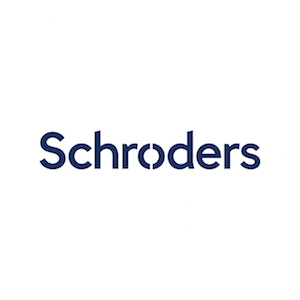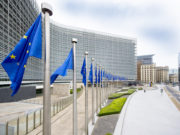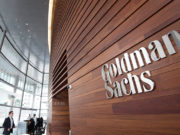Schroders Investment Director Chloe Shea: Is ESG the Only Way to Capture Thematic Investment Opportunities?
April 2022 – This is an expert commentary on ESG investment opportunities and Thematic investment – Is ESG the Only Way to Capture Thematic Investment Opportunities? by Chloe Shea, who is the Investment Director (Multi-Asset) at Schroders.
 Schroders is a global active asset manager managing more than £574.4 billion (€641.7 billion / $785.1 billion 31/12/20) assets and managed locally by 42 investment teams worldwide. As a global active asset manager, the way we direct capital not only shapes the financial returns we achieve for our clients but also the impact that the companies in which we invest on their behalf might have on society.
Schroders is a global active asset manager managing more than £574.4 billion (€641.7 billion / $785.1 billion 31/12/20) assets and managed locally by 42 investment teams worldwide. As a global active asset manager, the way we direct capital not only shapes the financial returns we achieve for our clients but also the impact that the companies in which we invest on their behalf might have on society.
Is ESG the only way to capture thematic investment opportunities?

Chloe Shea: In the past few years, thematic investment has emerged as a popular approach that helps investors capture opportunities associated with ongoing structural changes. This comes at a time when more and more investors seek to achieve long-term growth through forward-looking investment strategies.
When we look at investment megatrends, investment in “Environment and Sustainability” (more often referred to as ESG investment) has undoubtedly been a highly popular theme among investors. However, it is not uncommon for investors to think of it as the only thematic investment trajectory. Are thematic investing and ESG investing indeed the same thing?
How do we define “thematic investing”?
Thematic investing describes an approach where investors look beyond the traditional geographical or sector framework to access structural opportunities that drive global transformations. We are already seeing a number of structural drivers that are likely to have a material impact on the economy as well as the investment markets over the next decade and beyond.
“Environment and Sustainability” is clearly an important theme, but in our investment thesis, “Innovative Transformation” and “Cities and Lifestyle” also hold significant spots in the thematic investing universe. These core themes can be related to trends such as smart cities, healthcare innovation, and smart manufacturing.
For instance, technological advancement has enabled many different investment themes to thrive. Such developments not only reshape how companies operate, but also expedite the manufacturing automation process, thus making smart manufacturing an interesting sub-theme under the “Innovative Transformation” territory.
People-oriented sustainable developments could offer long-term opportunities
In fact, “Environment and Sustainability” as a core theme covers a broad range of sub-themes, among which many are under trends that have only begun not long ago. One of them is sustainable food and water.
With mounting challenges coming from the growing world population, the food and water system will require a lot of investments to make it more resource efficient and sustainable. New technologies and growing consumer demand are set to broaden the investment opportunities within the abovementioned sub-theme. Leading companies with dominant positions are also well-placed to increase their revenue as they can raise prices to end consumers.
On the other hand, thematic investment is often associated with growth as an investment style, of which performance could come under challenge in a higher inflation and rising rate environment. Yet, sustainable food and water themed companies are traditionally viewed as more defensive and are usually “value” companies. Therefore, they tend to hold up well against the broader market and are able to complement the growth nature of the investment strategy.
Smart manufacturing presents productivity, cost and quality benefits

Investors will inevitably need to take an innovative investment approach in an ever-changing investment era. Today, smart manufacturing makes more economic sense than ever. Tech and the availability of actionable data enable production efficiencies, cutting waste and downtime, reducing energy consumption and driving innovation across the entire manufacturing value chain. Together, these advances are boosting productivity and, ultimately, profitability.
Taking automation as an example, productivity gains are being delivered in a cost-effective and agile manner as robots move into new markets through innovations in vision and safety. Robots have been used in industries such as car manufacturing for a long time now, but they have largely been fairly basic machines with a minimal range of applications, and are kept apart from employees for safety reasons. Increasingly though, collaborative robots (or “cobots”) have been developed that are more agile, have a wider range of capabilities, and can work alongside humans. This opens up the robotics potential into new end markets like electronics and food and beverage production.
In recent years, manufacturing automation is becoming a more attractive part of capex spending plans given the ongoing supply chain pressures and margin pressures due to higher inflation (particularly on the labour front). We believe smart manufacturing companies can benefit from higher productivity, as well as cost and quality control.
Meanwhile, pandemic-related disruptions are also driving automation demand as manufacturing companies rethink processes and localisation in the face of ever mounting labour shortages, longer lead times and rising costs. It’s therefore not surprising to see that the theme of reshoring noticeably accelerated towards the end of 2021. We think the potential for automation remains huge.
What about the “Cities and Lifestyle” theme?

Over the years, the desire for immediacy has dramatically changed our lifestyles. Seamless global connectivity also allows new products and services to be created and delivered almost simultaneously. We can now count in days, rather than years or even months, for innovations to be adopted globally and to redefine norms.
The Covid-19 pandemic has clearly accelerated changes in working practices and lifestyles. Work-from-home arrangements have made digitalization, automation, and cloud computing a necessity. Coupled with shifting consumer behaviour, technology and e-commerce related investments saw accelerated growth.
All these trends mentioned above can be categorised under the “Cities and Lifestyle” theme. As the upward pressure on yield continues to grow, a higher interest rate may derail earnings for these companies and may underperform. Considering the prevailing economic and monetary cycles, it is therefore important to take an active approach and adjust relative exposure to different major themes.
Selectivity across regions, industries and asset classes is vital
Whilst investors are still faced with a challenging market environment, thematic investing strategies could potentially help them identify mega-trends that can have a great impact on our future. Taking a multi-thematic approach means that investors will have the flexibility to diversify and dynamically rotate into themes with different styles under different market environments.
Lastly, looking beyond specific industries or regions will be vital in selecting companies that are most relevant to the trending themes across the globe. Investors should also consider actively adjusting the allocation in their portfolios amongst assets such as equities and bonds to be positioned for better long-term risk-adjusted return potential.
This is an expert commentary on ESG investment opportunities by Chloe Shea, who is the Investment Director (Multi-Asset) at Schroders.
Important Information
This document is intended to be for information purposes only and it is not intended as promotional material in any respect nor is it to be construed as any solicitation and offering to buy or sell any investment products. The views and opinions contained herein are those of the author(s), and do not necessarily represent views expressed or reflected in other Schroders communications, strategies or funds. The material is not intended to provide, and should not be relied on for investment advice or recommendation. Any security(ies) mentioned above is for illustrative purpose only, not a recommendation to invest or divest. Opinions stated are valid as of the date of this document and are subject to change without notice. Information herein and information from third party are believed to be reliable, but Schroder Investment Management (Hong Kong) Limited does not warrant its completeness or accuracy.
Investment involves risks. Past performance and any forecasts are not necessarily a guide to future or likely performance. You should remember that the value of investments can go down as well as up and is not guaranteed. You may not get back the full amount invested. Derivatives carry a high degree of risk. Exchange rate changes may cause the value of the overseas investments to rise or fall. If investment returns are not denominated in HKD/USD, US/HK dollar-based investors are exposed to exchange rate fluctuations. Please refer to the relevant offering document including the risk factors for further details.
This material has not been reviewed by the SFC. Issued by Schroder Investment Management (Hong Kong) Limited.
Schroder Investment Management (Hong Kong) Limited Level 33, Two Pacific Place, 88 Queensway, Hong Kong www.schroders.com.hk
About Schroders
As a global active asset manager, the way we direct capital not only shapes the financial returns we achieve for our clients but also the impact that the companies in which we invest on their behalf might have on society. The relationship between these two outcomes has rapidly evolved as we see a fundamental shift in how companies are viewed and valued. Understanding the impact that they can have on society and the planet is crucial in assessing their ability to deliver risk-adjusted profits.
Our ongoing success is built on a history of experience and expertise, whereby we partner with our clients to construct innovative products and solutions across our five business areas consisting of Private Assets & Alternatives, Solutions, Mutual Funds, Institutional and Wealth Management and invest in a wide range of assets and geographies. By combining our commitment to active management and focus on sustainability, our strategic capabilities are designed to deliver positive outcomes for our clients.
We are responsible for £574.4 billion (€641.7 billion/$785.1 billion 31/12/20) assets of our clients, managed locally by 42 investment teams worldwide. As a global business with over 5,500 talented staff across 35 locations, we are able to stay close to our clients and understand their needs. We have over 200 years of experience in investment and innovation.
Visit: www.schroders.com.hk
Sign Up / Register
Caproasia Users
- Manage $20 million to $3 billion of assets
- Invest $3 million to $300 million
- Advise institutions, billionaires, UHNWs & HNWs
Caproasia Platforms | 11,000 Investors & Advisors
- Caproasia.com
- Caproasia Access
- Caproasia Events
- The Financial Centre | Find Services
- Membership
- Family Office Circle
- Professional Investor Circle
- Investor Relations Network
Monthly Roundtable & Networking
Family Office Programs
The 2025 Investment Day
- March - Hong Kong
- March - Singapore
- July - Hong Kong
- July - Singapore
- Sept- Hong Kong
- Sept - Singapore
- Oct- Hong Kong
- Nov - Singapore
- Visit: The Investment Day | Register: Click here
Caproasia Summits
- The Institutional Investor Summit
- The Investment / Alternatives Summit
- The Private Wealth Summit
- The Family Office Summit
- The CEO & Entrepreneur Summit
- The Capital Markets Summit
- The ESG / Sustainable Investment Summit


































